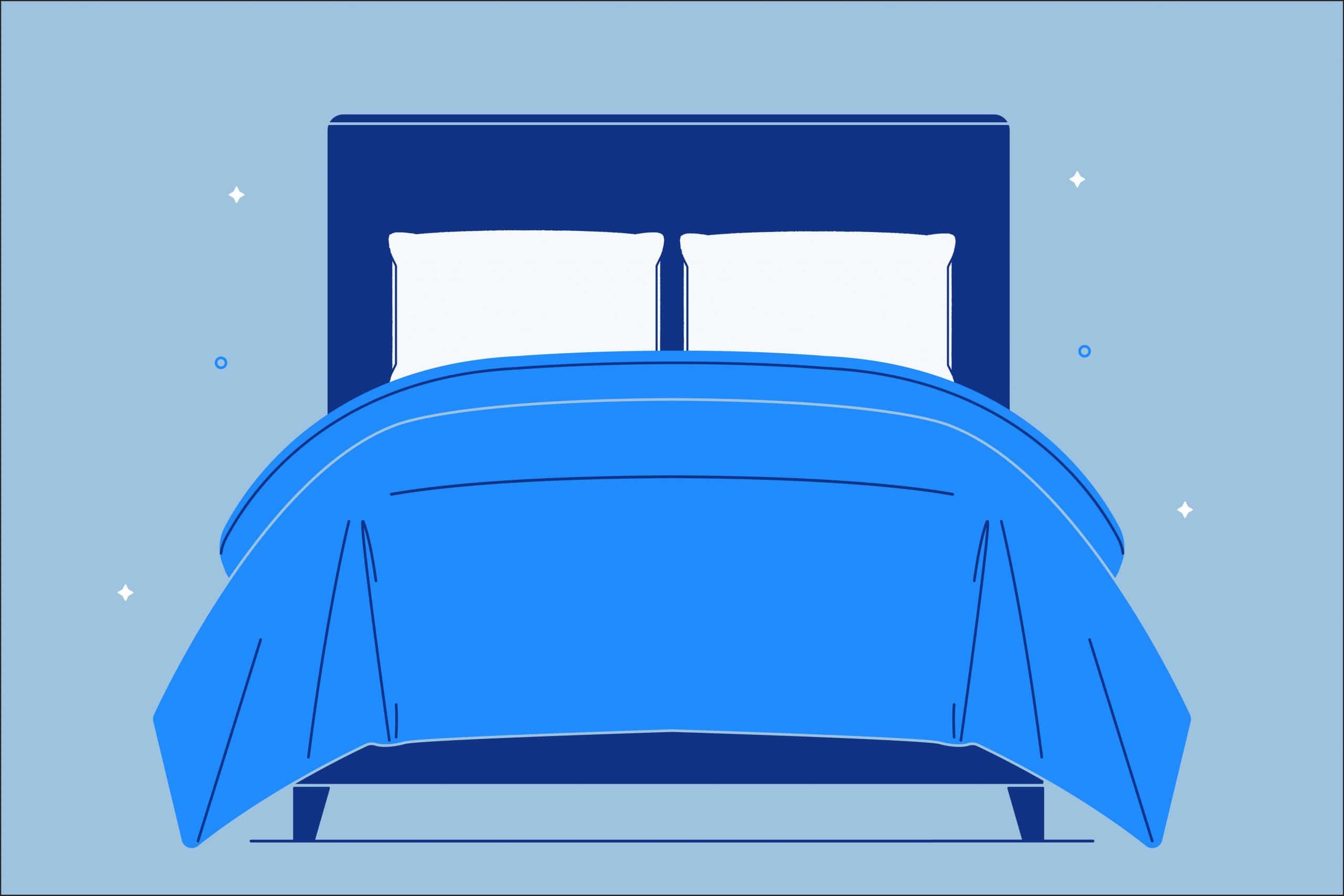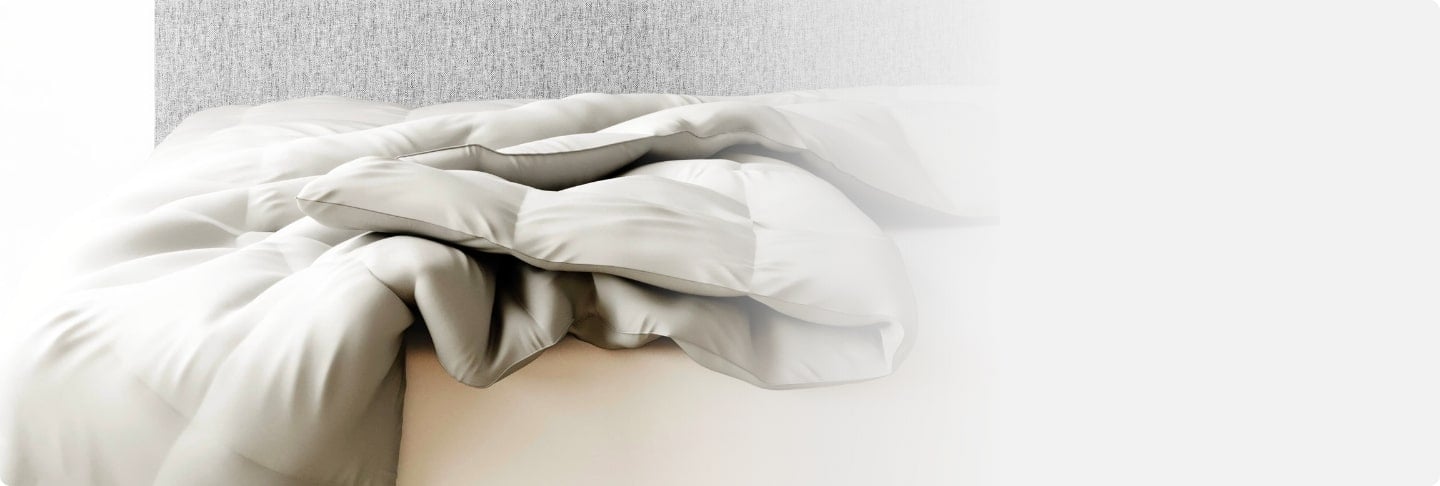Key Takeaways
- Duvets and Comforters Are Different: Duvets and comforters are often used interchangeably, but they are distinct bedding accessories. Duvets are typically fluffier, filled with down or down alternatives, and are covered with removable duvet covers. Comforters, on the other hand, are flatter, have less fill, and are usually sold as part of a bedding set.
- Duvet Characteristics: Duvets are known for their warmth and coziness. They are filled with materials like down, silk, wool, or synthetic fibers and are covered with duvet covers that come in various colors and designs. Duvets are easy to clean by simply removing the duvet cover for washing. They are versatile and suitable for cold winter months.
- Comforter Characteristics: Comforters are the American counterpart of duvets and are generally flatter. They don’t require separate covers and are often sold as part of bedding sets with matching pillow covers and sheets. Comforters offer a wide variety of colors and patterns to match bedroom decor. Maintenance may be a bit more challenging as they may not fit in standard washing machines.
You have the best mattress, pillow, and bed sheets for your needs, but your sleeping system is incomplete without a duvet or a comforter—you need something more to feel cozy before you fall asleep. For an optimal sleeping experience, you need the right bedding accessories.
To reap the maximum benefits of sleep, you need to find the right top layer for your bedding—something that will envelop you in its warmth and pave the way for a good night’s sleep.
Duvets and comforters are often used interchangeably, but they are actually two different things. They are available in different sizes and both provide a comfortable sleep cocoon.
Quick Guide: A 30-Second Summary
| Best Duvet Overall | Amerisleep Recover+ |
What is a Duvet?

A duvet is a top layer of bedding that looks decorative and keeps the sleeper warm and snug. The word “duvet” is a French word, meaning “down”—it refers to the feather-like substance from geese and ducks.
Down is the area beneath the outer covering of feathers, usually closest to the belly of geese or ducks. It is very light and fluffy and is an effective thermal insulator— a perfect filling for a duvet. The fill power determines the weight and warmth of a duvet.
Duvets originated in Europe, where traditionally down is used to fill large pouches of fabric which serves as a cozy top layer of bedding. When you hear someone saying they sleep “European style,” that typically means they use a duvet.
Stuffing Inside a Duvet
The duvet is like a soft flat bag made with different kinds of fabric and stuffed with down, or down alternative, like silk, wool, polyester, or feathers. The down alternative duvets are less expensive than traditional down and feel equally snug and warm. They are also a good hypoallergenic alternative for those prone to allergies from dust in natural down.
Sometimes despite washing, traces of dust remain, triggering allergic reactions in some people. Down alternatives are hypoallergenic, making them an equally comfortable but irritant-free alternative to down. Silk is another good option for those looking for a hypoallergenic duvet.
Duvets have intricate stitching all over to ensure the stuffing remains evenly distributed without getting too clumpy or flat on any side. Detailed stitches hold the stuffing in place and are essential for a duvet to feel uniformly plush.
When buying a duvet look carefully for stitches crisscrossing the duvet—these are important to keep the fiberfill in place. Stitches running in plain lines across the duvet will not be sufficient to hold the stuffing in place and keep it evenly distributed. An unevenly distributed stuffing inside a duvet defeats its purpose, as it won’t surround you with even comfort and warmth.
The fill is also why you need to be careful when washing a duvet, as sometimes a machine washer can affect the fill’s feel.
Duvet Covers
Duvets are sometimes known as duvet inserts—to differentiate them from duvet covers. Duvets or the duvet inserts are usually plain white in color, but you can dress them up in fancy duvet covers, depending on the occasion, season, or mood.
Duvet covers are available in different colors, designs, and patterns, and made of various types of materials like cotton, linen, or silk. Choose one with a thread count between 300 to 600 for a soft and durable material able to withstand numerous washes.
Removable covers may be zipped, buttoned, or tied to secure the duvet insert inside.
What is a Comforter?
A comforter is the American counterpart of the duvet. Though a comforter is also a huge fabric pouch sewn together with stuffing like wool, silk, cotton, or synthetic fibers, it usually feels flatter than a duvet. There’s less fill in a comforter, making it cooler than a duvet. It is possible to find a down comforter, where the stuffing is the same as a traditional duvet, but there’s less fiberfill. In colder months a comforter is usually paired with a blanket.
Since comforters don’t have a separate cover like a duvet, comforters are meant to be used with a top sheet to maintain a hygienic barrier between the comforter and the sleeper.
Comforters are available in a wide variety of colors, patterns, and designs. They’re usually sold as part of a bedding set, along with matching or color-coordinated bed sheets, pillow covers, shams, and sometimes bed skirts. You can choose from a wide variety of options to suit the occasion, season, or bedroom decor.
Differences Between a Duvet and a Comforter
Functionally, both duvets and comforters serve the same purpose, yet they are different from each other.
| Duvet | Comforter |
| Duvets are fluffier with more fiberfill. | Comforters have comparatively less fiberfill and feel flatter. |
| Extra fiberfill adds to the warmth. Duvets are great in cold winter months. | Comforters may not be warm enough for the winter months. You may need to add extra blankets. |
| Duvets are usually light-colored or plain white. | Comforters come in a wide variety of colors, styles, designs, and patterns. |
| You can dress them up with duvet covers. | Comforters don’t need a cover, but you do need a top sheet. |
| Cleaning the duvet is not necessarily required, because you always have a duvet cover, which is easily machine washable. | Comforters can be machine washed or dry cleaned, depending on the material they contain. |
| Duvets are usually sold as individual pieces, not as part of a set. | Comforters are often sold as part of a bedding set or sometimes individually. |
Advantages of a Duvet
- Cleaning is simple by removing the duvet cover and putting it in the washing machine. Duvet covers serve as a protective cover over the duvet. Some duvets may require dry cleaning—check the care label for cleaning instructions.
- Duvets are a convenient option if there are kids in the house. In case there are any accidental spills and stains, then it is on the duvet cover instead of the duvet insert.
- If you want to change the look of your bedroom and want the bedding to match, you can simply change the duvet cover.
- The extra fiberfill in duvets makes you feel nice and toasty when you wrap it around yourself. They usually suffice even in the cold winter months. Duvets are available in different weights to suit your environment.
- Making your bed is easy because you don’t have to worry about extra top sheets and blankets.
Disadvantages of a Duvet
- Inserting a duvet inside the duvet cover can be a difficult and cumbersome process.
- It is not usually sold as part of a bedding set, so you have to mix and match colors and designs accordingly to suit your bed sheets and pillow covers.
Advantages of a Comforter
- An economical option—comforters usually comes as part of a bedding set, saving you the hassle of having to color coordinate pillow covers and bedsheets.
- Comforters look gorgeous with different colors, prints, and patterns. You don’t need to shop for a cover.
Disadvantages of a Comforter
- Maintenance can be difficult because the comforter may not fit in the washer. Dry cleaning increases cost.
- If you need to change your bedroom decor or want a new look for your bedroom, you have to get a new comforter, not just a cover.
FAQs
Can you use a comforter as a duvet?
Functionally, both the comforter and duvet serve the same purpose—both are a plush top layer bedding meant to keep you warm and snug.
Do you need a top sheet with a duvet?
Since you already have a duvet cover on the duvet, you may not need a top sheet.
Can you use a comforter cover?
You may use a cover over your comforter, but you don’t have to. Comforters usually look gorgeous the way they are, but if you want to cover it for ease of maintenance then you may do so.
Is a duvet a blanket?
Though some people may refer to duvets as blankets, a “blanket” is a very generic umbrella term that refers to any covering you use on the top of the bed, usually to keep you warm. A duvet contains down feathers and is meant for the cold winter months or just a simple, streamlined design for your bedroom.
Which is better, a duvet or a quilt?
One is not necessarily better than the other; it just depends on your preferences. Quilts are thinner than duvets, so they might work for the summer months. Duvets contain feathers, which can stir up allergies for some people, and they are quite heavy. You may choose one or the other because of how it suits the look of your bed.
What Should You Choose?
You may use the duvets during the cold winter months and the comforters during the warmer months. If you don’t have the time or the inclination to make your bed, then comforters may be a better option since most come packaged as a bed in a bag. But if maintenance doesn’t worry you, then you may opt for a duvet.
About the author
April Mayer is a sleep expert and writer with a degree in exercise physiology. She has dedicated her career to exploring the relationship between sleep and productivity. Her insightful articles, such as "The Surprising Way Your Mood Might Be Messing With Your Productivity" and "Wake Up to More Productive Mornings," have been featured in reputable publications like Forbes, Greatist, Real Homes, Thrillist, Tom's Guide, and Eat This, Not That. With a passion for helping others lead more productive lives through restful sleep, April offers valuable expertise on foods and vitamins for better sleep. As a trusted member of the Early Bird team since March 2020, she continues to provide informative and well-researched content.
View all posts





